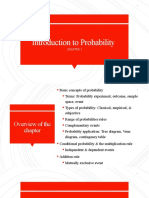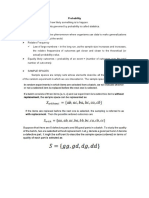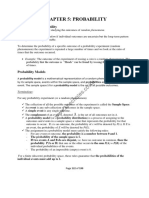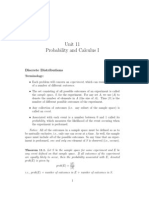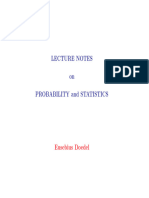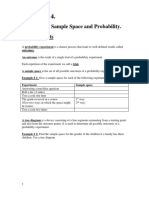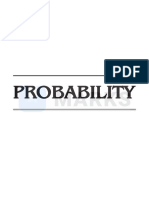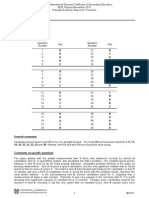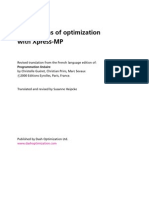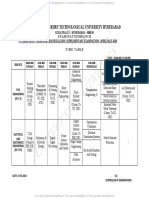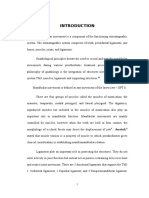0% found this document useful (0 votes)
12 views36 pagesChapter 3.1 - Random Variables
Chapter 3 covers the definitions and concepts related to random variables and probability distributions, including terms such as experiment, sample space, event, outcome, and probability. It explains how to calculate probabilities for various events using classical, empirical, and subjective approaches, as well as the addition and multiplication rules for compound events. Examples illustrate how to determine the values of random variables and compute probabilities based on different scenarios.
Uploaded by
Tristan ReyesCopyright
© © All Rights Reserved
We take content rights seriously. If you suspect this is your content, claim it here.
Available Formats
Download as PDF, TXT or read online on Scribd
0% found this document useful (0 votes)
12 views36 pagesChapter 3.1 - Random Variables
Chapter 3 covers the definitions and concepts related to random variables and probability distributions, including terms such as experiment, sample space, event, outcome, and probability. It explains how to calculate probabilities for various events using classical, empirical, and subjective approaches, as well as the addition and multiplication rules for compound events. Examples illustrate how to determine the values of random variables and compute probabilities based on different scenarios.
Uploaded by
Tristan ReyesCopyright
© © All Rights Reserved
We take content rights seriously. If you suspect this is your content, claim it here.
Available Formats
Download as PDF, TXT or read online on Scribd
/ 36




